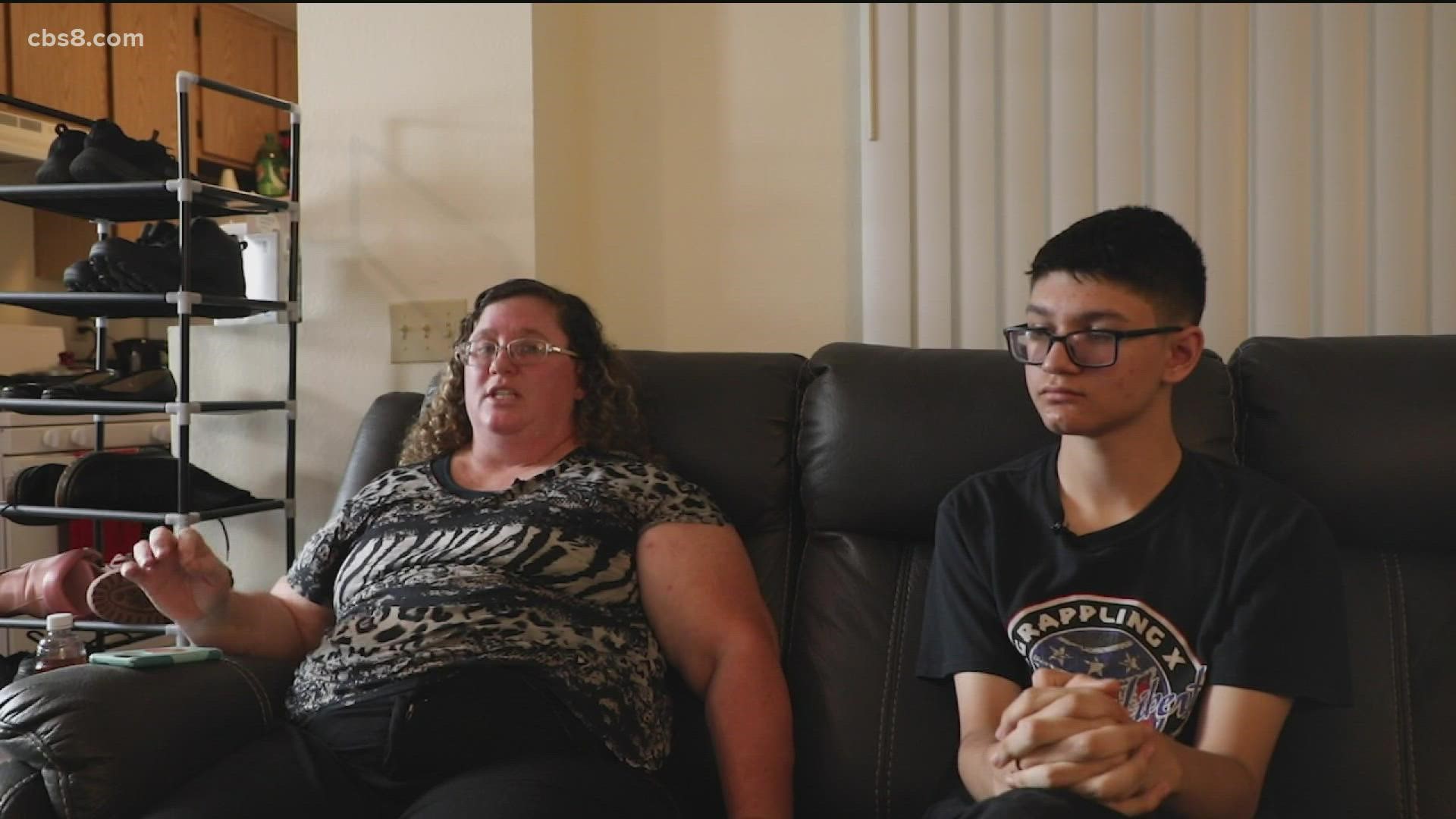CALIFORNIA, USA — This story was produced as part of a collaboration with the Center for Public Integrity and USA TODAY.
Joshua Zavala stood at 5-foot-2 and weighed under 100 pounds when he first felt handcuffs around his wrists.
A quiet kid with autism, he struggled to be accepted by some of his peers at Lakeside Middle School — so much so that his mother says they reported 16 bullying incidents in one year.
The last time, a student pushed Joshua from behind, causing him to fall and hit his head on concrete. He traveled to a children’s hospital in an ambulance that his mother called after he later complained of neck pain.
Other kids told school officials that Joshua made a verbal threat to “shoot up” the campus after the assault. Joshua denies the claim. Lakeside Middle reported him to police, anyway.
Within days, the 13-year-old went from preparing for a school dance to hours of police questioning. The San Diego County Sheriff’s Department sent him to a mental health facility against his parents’ wishes after Joshua spoke with one of the agency’s psychiatric emergency response teams.

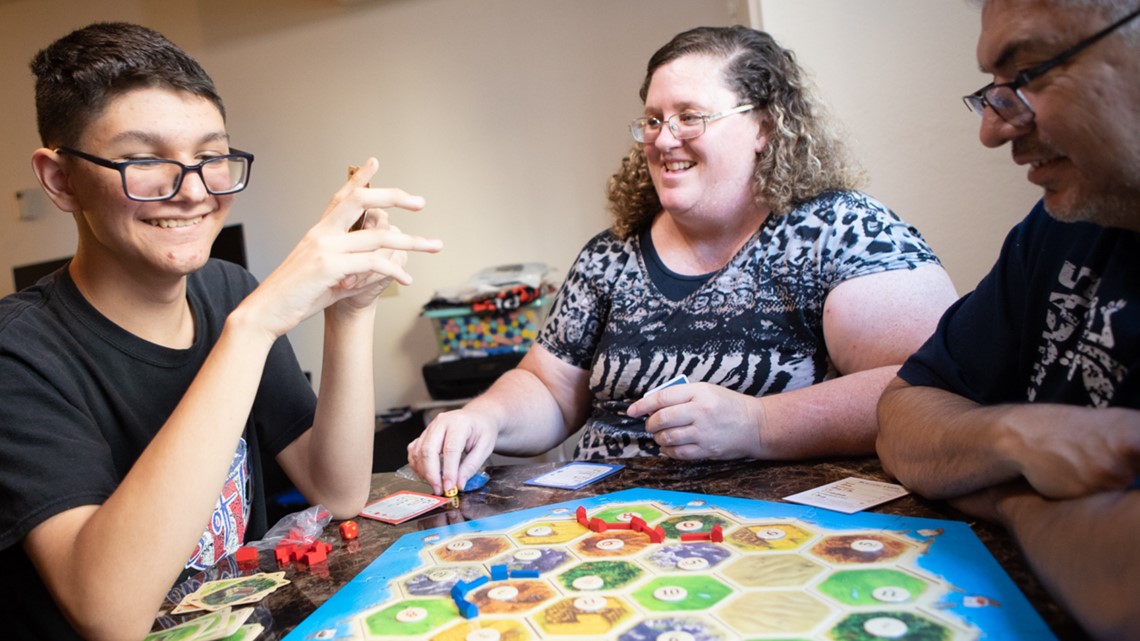
“After Joshua left, they had told us, 'don’t go up there,'” said mother Serina Zavala. “We knew we had to bring him his meds and clothes and those types of things. We went ahead and went up there because, you know, that’s what we do. But (my husband) and I just bawled and cried on the way home.”
Schools across San Diego County report hundreds of children to law enforcement every year for a wide range of matters, among them theft, assault, drugs, property damage and others. Most are middle school-aged or older, but some are young enough to attend elementary school.
According to federal data analyzed by the Center for Public Integrity, students with disabilities, Black children and on some campuses, Native American and Latino children, have been disproportionately impacted by policing in schools. Leading San Diego County in law enforcement referrals were schools that serve students with behavioral or other special needs — including those who have already encountered the juvenile court system.
Nationwide, nearly 230,000 students were reported to law enforcement during the 2017-18 school year, the most recent data available. Black children and students with disabilities were referred at nearly twice their share of the overall student population.
At the San Diego Unified School District, Black students comprised about 8% of enrollment but made up nearly 19% of referrals. Students with disabilities made up more than 30% of referrals but only 14% of the population.
The bulk of the district’s alternative schools reported rates more than 20 times the national average.
School officials say disciplinary policies are meant to maintain safe campuses, and several districts told inewsource they use “restorative justice” approaches when a student has been reported to police. Services like counseling or partnerships with community agencies, for example, are made available.
But the disparities come despite years of mounting pressure on schools to stop policing kids.
“They’re criminalizing some ordinary behavior of students and they’re certainly disproportionately referring students of color to the juvenile justice system rather than disciplining them at school,” Maura McInerney, legal director at the Education Law Center, a Pennsylvania legal advocacy group, told the Center for Public Integrity.
Where police are called the most
While not all law enforcement referrals end in an arrest or charges filed, students may still be issued citations that require them to appear before judges or other juvenile court system officials. Several school districts told inewsource they contact police for Education Code violations such as assault with a deadly weapon, possession of dangerous objects, or drugs and alcohol.
The reason for a referral — and its aftermath — is not specified in the federal data.
This is what happened to Joshua.
Handcuffed, he was transported to Aurora Behavioral Health Care in Rancho Bernardo, where he stayed for three days. His family later temporarily moved from San Diego as Joshua underwent months of counseling for post-traumatic stress disorder.
Now 16, Joshua has an intense fear of law enforcement that persists today. Seeing officers in public triggers flashbacks, sometimes causing him to freeze or have what his mother described as “meltdowns.”
He never returned to Lakeside Middle.
“I have disabilities that cause me to do certain things,” Joshua said. “I have autism, depression, anxiety — I got a whole lot. I’m not going to list all of them.
“But just because I have autism doesn’t mean that I’m lower (than) or above people. I should be treated equally.”

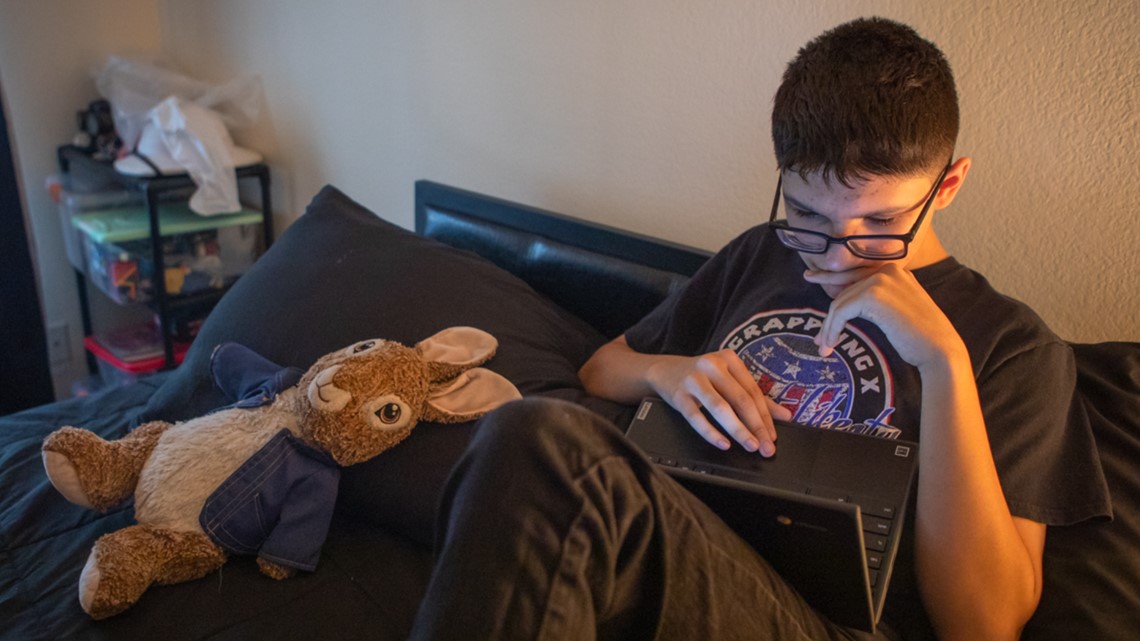
Most of the county’s schools didn’t report any students to law enforcement during 2017-18. But those that did span the region, with the highest rates of referrals happening on campuses specifically designated for some of the area’s most vulnerable children.
The San Diego County Office of Education had the highest referral rate of all local districts. Twenty-five of its roughly 1,400 students were reported to police, and all but five of those came from its Community Schools, which includes students on probation.
Frank Harris III, an education professor at San Diego State University, said the police referrals show “remarkably similar” patterns to his own research on student discipline. A study he co-authored earlier this year found Black students were suspended at disproportionately high rates across California, with especially high disparities among boys in the earliest grades of elementary school.
The data suggests a systemic issue, Harris said.
“Kids really start to engage these questions about, ‘Who am I? How do others see me? Am I valued? Am I important?’’ he said. “And when you’re having these seemingly adversarial interactions in schools and you’re being disciplined and referred, and you’re getting labeled as the ‘bad kid,’ I wonder about what that might mean for the kid’s long-term health and wellness and sense of self-worth.”
At San Diego Unified’s Alba Community Day School, nine of its 33 students were reported to police — a rate more than 60 times the national average.
The North Park school serves seventh to 12th graders who have been handed a suspended expulsion from elsewhere in the district or faced other disciplinary issues. Some are transitioning out of the juvenile court system.
Trailing Alba was Riley Alternative School, which reported about 120 referrals per every 1,000 students, and Mark Twain High, which had almost 100 referrals per 1,000 kids. The national average is 4.5.
At Riley, 20 of its 162 students were reported to police. Black students accounted for half of the referrals despite making up 17% of enrollment.
And while students with disabilities accounted for just 23% of Twain High’s population, they represented 48% of referrals.
The county’s largest district and the only one with its own police department, San Diego Unified accounted for 60% of local referrals. More than 10% of them are elementary school students.

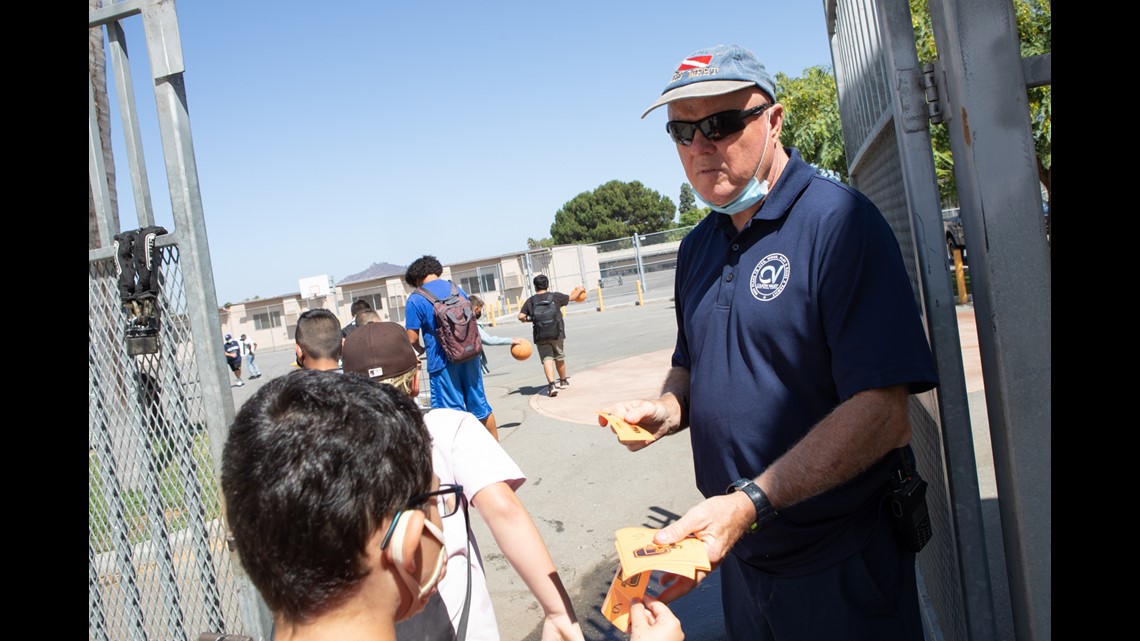
The district was more likely to report students to police regardless of race or disability status when compared to national averages. With 982 referrals among its 105,000 students, it held the fifth-highest rate in the county. (The Sweetwater Union High School District, the county’s second-largest, reported just eight referrals among its nearly 40,000 students.)
San Diego Unified officials acknowledged its discipline gap between white students and students of color, but said they’re constantly adjusting policies and are committed to improvement. After it changed disciplinary rules, including reducing the number of expellable offenses and offering more restorative programs, it now has one of the lowest suspension rates for Black students among large urban districts.
While the district has resisted recent calls to eliminate or defund its school police, its school board in November unanimously approved a working group’s proposed reforms, including more training on when to call police and to treat discipline issues and criminal matters separately.
The police department also is starting a youth advisory committee to work with students who have had negative interactions with law enforcement.
Interim Police Chief Joey Florentino said while the department must ensure victims’ rights, it also works to avoid criminalizing kids.
“We want our kids to get out of school, learning from their mistakes and being able to join society,” Florentino said.
San Diego Unified recorded 365 school-related arrests in 2017-18, according to separate federal data, though that number had already been steadily declining. A spokesperson told inewsource that arrests are down by 79% in the past decade.
Music Watson, chief of staff at the County Office of Education, said school officials reported students for matters including drugs, assault, property damage, weapons, intoxication and sexual harassment against staff.
The county office, which reported three arrests in 2017-18, uses a “multi-tiered system of support” of counselors, therapists, community partnerships and other tools, Watson said.
“SDCOE schools are constantly striving to address issues using a restorative approach that builds community, strengthens relationships, and improves school climate,” she said in an email to inewsource.
At Cajon Valley, a focus on relationships
Russ Moore had wrapped up 38 years with the sheriff’s department when a former colleague called. There was a job for him, and the old co-worker was selling it as an easy gig: monitor a school campus, watch the kids, keep everyone safe.


Now in his third year as campus safety lead, Moore is a regular face in the hallways of Montgomery Middle School in El Cajon. He playfully badgers kids for a piece of their food while supervising lunch and cracks jokes with teachers as he peeks into classrooms throughout the day. Occasionally, a voice breaks through the two-way radio clipped to his pocket summoning him for help.
But his first year, Moore wondered whether he should have just enjoyed retirement instead. Some kids just don’t listen, he said. Part of Moore’s job is breaking up fights, something he says can happen relatively often.
Moore said he’s had to determine whether to report matters to police and often leans on his own law enforcement background to make the decision. Sometimes, he said, it doesn’t rise to that level.
Montgomery Middle reported 13 kids to police in 2017-18, more than three times the national rate.
“Obviously safety’s number one,” said Ryan Love, security and safety coordinator at the Cajon Valley Union School District. “But these (campus safety leads) are really about building relationships with students.”
Love, a former school resource officer himself, joined the district in 2018. He hired Moore, who he met at the sheriff’s department, that same year.


Cajon Valley reported 109 children to police for school-related incidents the year before Love arrived, though none resulted in an arrest. The district had the second-highest number of referrals in the county and the eighth-highest rate, with 6.3 referrals per 1,000 enrolled students.
Black students were just nearly 6% of Cajon Valley’s enrollment but accounted for almost 17% of referrals in 2017-18. About 13% of the district’s kids had disabilities, but they made up a 32% share of students reported to police.
Now, Love said, the district works to meet families’ needs. Officials view law enforcement as the last resort and are more focused on “an in-house solution” that makes a distinction between disciplinary matters and police issues, he said.
“One incident alone does not dictate us calling law enforcement,” Love said. “It’s the totality of circumstances, and it’s about finding out what are the students’ intentions — was it a joke? Did they say it in the heat of the moment?”
Love said multiple officials are involved in decision-making, counseling for students has been increased and educators consider other factors outside of school, including whether they’ve been impacted by a traumatic event.

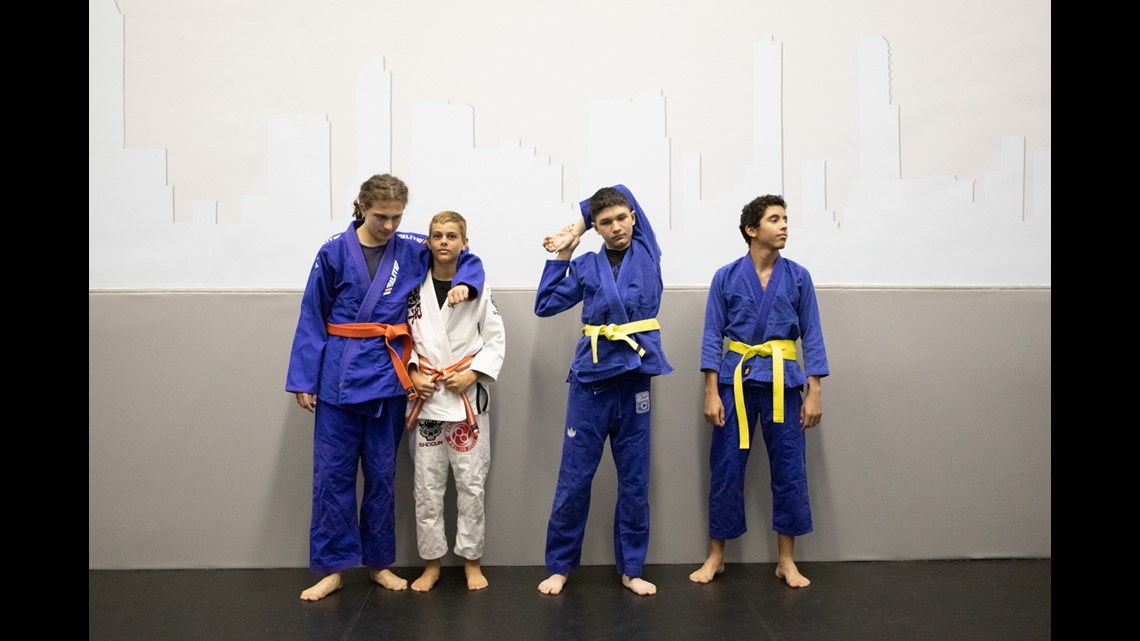
“If you’re the only one in the room and you’re assessing, you’re not getting all disciplines involved based on their experience, you’re really doing that student an injustice, I think,” Love said. “When I first got here, it didn’t just happen like that.”
‘We’ve got to have grace for kids’
Joshua Zavala admitted that prior to the assault, he said things out of “fits of anger” after bullying. He insists he doesn’t always mean — or realize — what he says.
And his parents stress they’re not “anti-police.” They know threats must be treated seriously. But from the school to law enforcement, they said Joshua encountered people who weren’t prepared to handle someone with special needs — and as a result, their son was traumatized by a system that has long been inadequate for handling kids like him.
“People that have special needs kids, they go through a lot,” Serina Zavala said. “They really have to fight a lot to get services and different things like that. And the kids work really hard to fit in. So having police called out for those types of individuals and the parents — they’re already struggling, they’re already tired.”
The sheriff’s department confirmed a deputy took Joshua in handcuffs to the Aurora facility in 2018. Lt. Amber Baggs, an agency spokesperson who reviewed body camera footage following an inewsource inquiry, said it “was done with the utmost care and compassion.” The deputy invited his parents to check Joshua’s handcuffs and allowed his parents to hug him before he was transported, she said.
“It is terribly unfortunate if Joshua has a fear of law enforcement as a result of this incident,” Baggs said in an email. “We strive to build trust with our community and we’d like to rebuild our trust with Joshua if the family allows. It is crucial that every citizen (especially children) feels safe and confident to contact a uniformed deputy during an emergency.”
Lakeside Middle Principal Steve Mull told inewsource he’s unable to discuss confidential student matters. But he said in a statement that officials “only bring law enforcement in when protocols require it” and “we have very clear procedures to follow when a threat is made.”
Mull also said the school has drastically reduced bullying incidents and successfully worked together with families of students with disabilities.
“Occasionally we have families that do not want to work together,” Mull said in the statement. “We do not have much success in these situations. Fortunately, they are very rare.”
Meagan Nuñez, a special education attorney in San Diego, said the underlying problem is that kids’ behavioral or educational needs aren’t being addressed appropriately, leading to behaviors that cause them to be disciplined by — and possibly removed from — schools.
Nuñez represented Joshua after the incident for an unrelated case focusing on his educational services. They ultimately settled with Lakeside Union School District.
“I can’t think of any world in which that’s going to positively impact behavior,” Nuñez said. “Removing the most vulnerable student from places where they’re getting — hopefully — education, behavior supports, related services, removing them from all of that because of a behavior that’s related to the disability is probably not effective.”
Harris, the SDSU professor, said schools shouldn’t lean on policies that risk traumatizing kids — and especially if they have a disproportionate effect on some of the most vulnerable students.
“We’ve got to have grace for kids,” he said. “We’ve got to protect kids, we have to love kids. No matter what, we still believe in them and their potential.”
Joshua ultimately moved back to San Diego, and he said his flashbacks have lessened thanks to counseling. His parents also credit his Jiu Jitsu coach, a family friend.
Joshua’s mom said the student who assaulted him in middle school was later punished.
Now a junior, Joshua attends the School for Entrepreneurship and Technology in Serra Mesa. Also known as SET High, the public charter school — part of San Diego Unified — is a smaller campus with fewer than 300 students.
It reported zero law enforcement referrals in the latest federal data.
WATCH: When San Diego County schools report their students to police, minorities and kids with disabilities are most impacted
inewsource intern Chloe Wynne and Corey Mitchell, Joe Yerardi and Susan Ferriss with the Center for Public Integrity contributed to this report.

